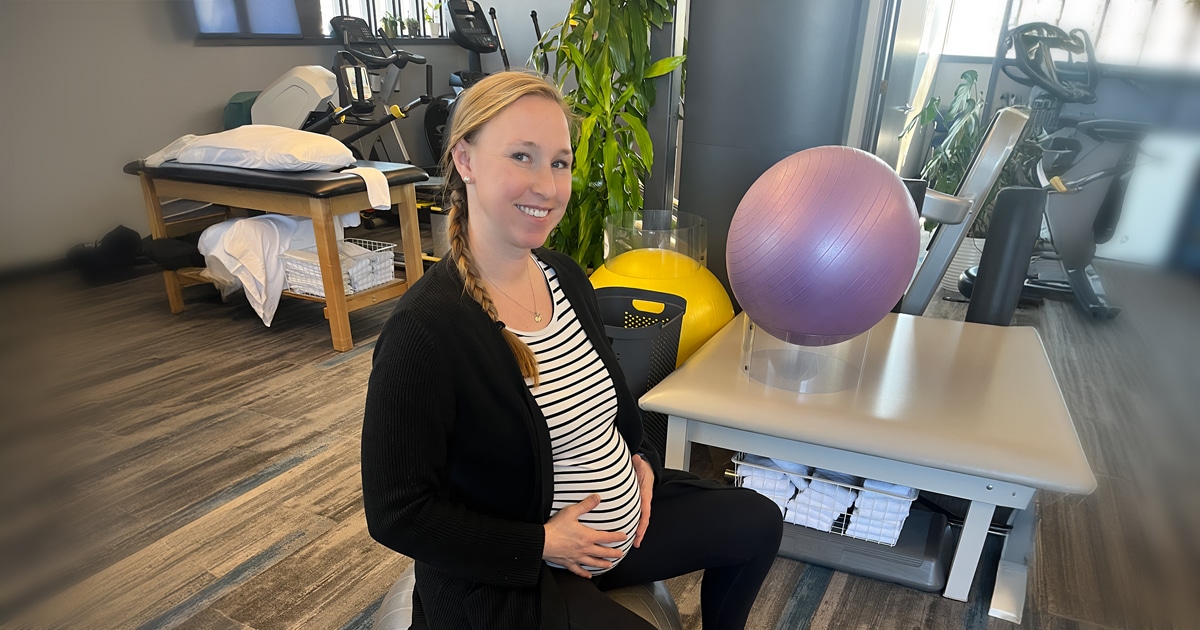SIJ Pain in Pregnancy

The miracle of growing a baby is truly a special occasion—one that is filled with many unforgettable moments, from a baby’s first kicks and rolls to finding out the gender. Unfortunately, along with all these highs, there are common lows that come with pregnancy. Symptoms can range from acid reflux to swollen hands and feet to pain in the pelvic region. Personally, both during my current and past pregnancies, I have dealt with sacroiliac joint pain and instability, also known as SIJ pain. This is a common symptom in pregnancy, but the good news is it can often be addressed with physical therapy, helping to keep you comfortable until your little one arrives.
What is the SIJ?
Before we dive into how physical therapy can help alleviate symptoms, let’s first discuss what the SIJ is and why pain in this area is common during pregnancy. The SIJ consists of two joints located at the base of your low back where your sacrum meets your pelvis on each side. These joints are responsible for weight transfer between the lumbar spine and the lower body. Ligaments and muscles stabilize the region, resulting in limited mobility of these joints. With SIJ pain, symptoms can be felt in either the left or right SIJ or both sides during pregnancy.
Why does SIJ Pain Occur?
There are several reasons why SIJ pain can increase during pregnancy. One reason is the increase in the hormone relaxin, which causes laxity in the joints in preparation for labor and delivery. Another factor is weakness in the core and hip girdle (including the glutes, hip abductors, and adductors) that often develops during pregnancy due to weight gain and the growing belly. This weight gain and the enlarging belly can also cause changes in posture, such as increased lumbar extension (arched back) and forward gravitational pull from the belly. These mechanical changes can make you more prone to experiencing SIJ symptoms. Another possible cause is leg length discrepancies, which may be congenital (from birth) or occur during pregnancy due to the pelvis shifting or rotating on one side, leading to instability and pain. Lastly, pregnant women experience increased intra-abdominal and uterine pressure, which can exacerbate symptoms in the pelvic girdle, including the SIJ.
Reducing Symptoms
Now that we’ve discussed what SIJ pain is and why it’s more common during pregnancy, let’s talk about how physical therapy, along with maintaining strength and mobility, can help reduce symptoms. Always remember to consult with your doctor to ensure it is safe for you to exercise during pregnancy. Physical therapy can be invaluable in identifying the specific causes (or multiple causes) of your symptoms. In general, pregnancy-safe exercises are used to strengthen and stabilize the region as much as possible.
We Can Help!
Physical therapists may also utilize hands-on techniques such as mobilizations, soft tissue massage, and muscle energy techniques to address tissue tension and improper bony positioning, ultimately improving symptoms. Visiting your closest Hulst Jepsen physical therapist can help pinpoint the causes of your SIJ pain and manage your symptoms throughout pregnancy. Call us at 616-256-8679 or visit hjphysicaltherapy.com to find the best location for you.
Source:
Sharma, Ajit PT, DPT, MS; Sharma, Shruti PT, DPT, MS; Steiner, Linda A. PT, DPT, MS, OCS; Brudvig, Tracy
J. PT, PhD, DPT, OCS. Identification and Effectiveness of Physical Therapy Interventions for Sacroiliac
Joint Dysfunction in Pregnant and Nonpregnant Adults: A Systematic Review. Journal of Women’s Health
Physical Therapy 38(3):p 110-117, September/December 2014. | DOI: 10.1097/JWH.0000000000000015
